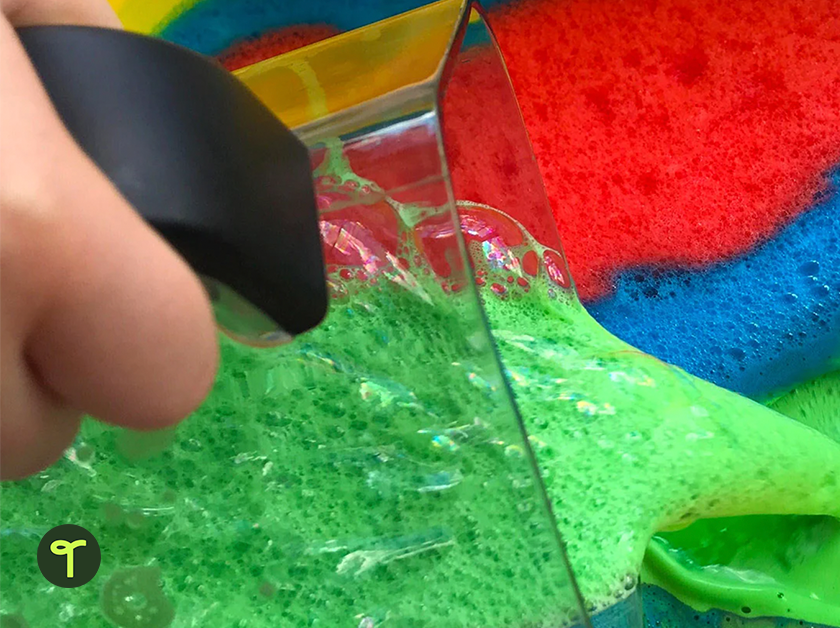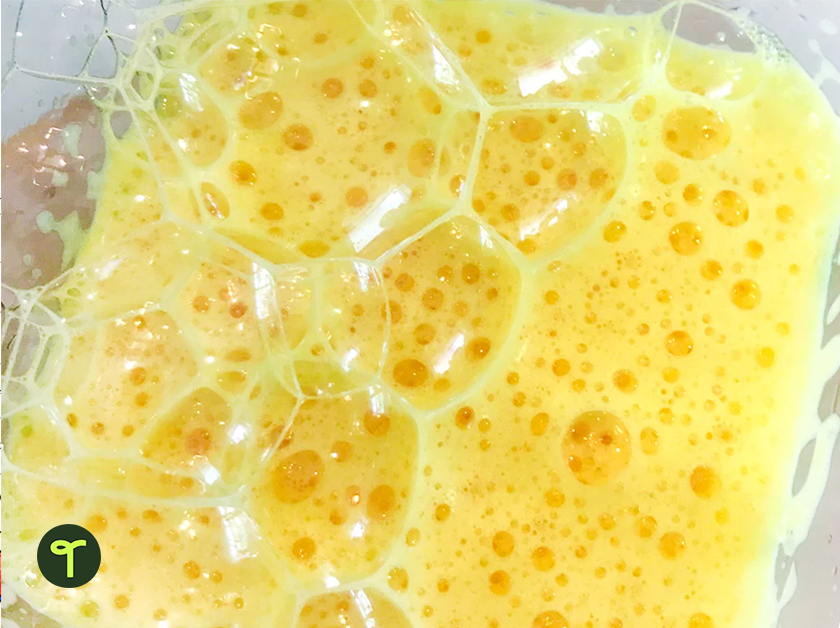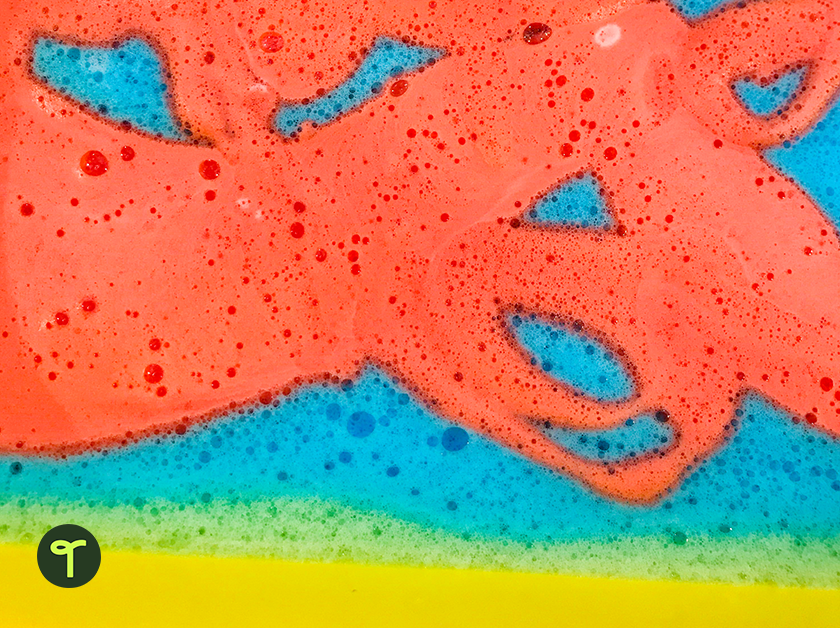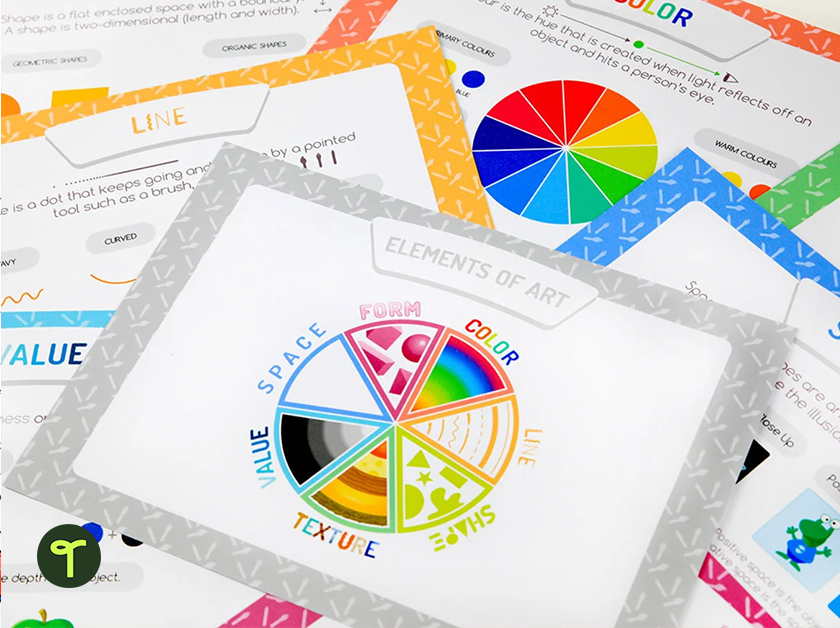Looking for a sensory activity for your classroom or maybe a STEM activity that will brighten up your students’ faces for St. Patrick’s Day? How about making rainbow foam with soap? It’s incredibly easy, and there’s nothing like sticking your hands into something colorful, soapy, and liquidy for sensory play.
We put together the ingredients and instructions for the easiest rainbow foam we know how to make!
How to Make Rainbow Foam
There’s probably more than one way to make it. But, the easiest option is water, liquid soap, and food coloring.
Add the following to your blender or smoothie maker:
- 1 cup of water
- 3 tablespoons of liquid soap
- 1+ teaspoon of food coloring
Seriously, that is it! Just put everything into a blender and run on a low/medium speed. Remember to put the blender lid on (um, yes, this oversight did occur, LOL).
If you want to make your rainbow soap foam extra fluffy, add 1/2 cup flour, and whisk it with a hand whisk.
Sensory Play
OK, now that you’ve got your foam, there are plenty of cool things that you can do with rainbow foam, but sensory play comes in at number one.

Sensory play provides kids with the opportunity to explore scientific processes, all while they play, create, explore, and investigate. So why not encourage little learners to:
- look closely at the foam with a magnifying glass
- make patterns in the foam with a stick
- place toy cars, dolls, or animal figures in the foam
- describe how the foam feels
- explore whether leaves and pebbles float or sink
Rainbow Foam Stem Experiment
Want to focus on using your rainbow foam for a STEM lesson?
A foam is a substance formed by trapping pockets of gas (bubbles) in a liquid or solid. And there’s some pretty cool science behind bubbles. So in this case, a bubble is air wrapped in soap film. And the soap film is made from soap and water. There’s even a thin layer of water between the two layers of soap molecules!

Encourage your little learners to look closely at the bubbles in the foam and to draw their observations. Here are a few more bubble ideas…
- Shine a flashlight on the bubbles and explore what happens and why.
- Compare the size of bubbles.
- Try to blow more air into a large bubble.
- Pop the bubbles (just for fun).
Rainbow Abstract Art
Why not create a piece of abstract art? Simply create abstract shapes by pouring the rainbow foam in various shapes and swirls. Next, explore how colors mix and change.

If you find your inner artist and feel like exploring color a little more, check out our Visual Art Elements Poster Pack.

Explore the Science of Rainbows
For a science fix to brighten your day, why not explore refraction and reflection? It’s easy to make rainbows whatever the weather. All you need is a glass of water, a light source such as a flashlight or lamp, and a sheet of white paper!
How to Make a Rainbow
- Place the sheet of white paper on a flat surface. If using sunlight as the light source, place the paper in a position where the sun will shine on it.
- Put the glass of water on the sheet of paper so that the light source shines through the water and onto the paper.
- If a rainbow doesn’t appear, move the light source around or slowly raise and lower the glass of water until a rainbow appears on the paper.
- Draw a picture or take a photo to record your results.
The sun makes rainbows when white sunlight passes through raindrops. The raindrops act like tiny prisms. These little prisms bend the different colors in white light, spreading it out and creating bands of color. Finally, these colors are reflected back to us as a rainbow.
Whether you want to make rainbow foam to explore art, science, sensory play, or just for no reason at all, it’s time. Dust off your blender, put down your frozen bananas, and pick up your food coloring!
If rainbow foam makes you feel happy, consider slime as your next move — we’ve got the easiest recipe in How to Make Slime for Kids (Easiest Recipe Ever!).
Or check out these sensory resources!
[resource:3177598][resource:3154254]







Comments